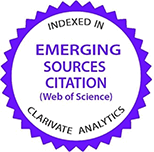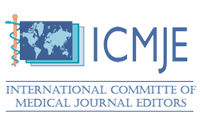













The Effect of Vitamin D Supplementation on Subcutaneous Allergen Immunotherapy in House Dust Mite Sensitive Asthmatic Children
Safa Barış1, Ahmet Özen1, Hasret Çağan1, Ayça Kıykım1, Aysın Tulunay2, Elif Karakoç Aydıner1, Işık Barlan11Marmara Üniversitesi Tıp Fakültesi, Pediatrik Allerji-İmmünoloji Bilim Dalı, İstanbul, Türkiye2Marmara Üniversitesi Tıp Fakültesi, Hematoloji ve İmmünoloji Bilim Dalı, İstanbul, Türkiye
Objectives: This study aims to investigate the efficacy, safety, and T regulatory cell response of vitamin D supplementation concomitantly used with allergen specific immunotherapy (SIT). Materials and methods: Fifty children (29 girls, 21 boys; mean age 8.8±2.4 years) with asthma sensitized to house dust mite receiving pharmacotherapy were randomized into three groups as: subcutaneous immunotherapy in combination with vitamin D supplementation group (650 U/day; n=17), subcutaneous immunotherapy group (n=15) and pharmacotherapy group (n=18). All patients were evaluated at baseline, 6 and 12 months for the symptom frequency, medication need, skin prick test, levels of serum vitamin D, total immunoglobulin E (IgE), specific IgE, and Der p 1-specific IgG4 levels. Dermatophagoides pteronyssinus induced CD4+CD25+Foxp3+ T regulatory cell ratio, intracellular Foxp3 expression, and peripheral blood mononuclear cell interleukin 10 (IL-10) and transforming growth factor beta responses were assessed. Results: Concomitant use of vitamin D as an adjunct to allergen SIT reduced asthma symptoms compared to the others at six months. The need for corticosteroids also decreased, compared to the pharmacotherapy group. The baseline vitamin D levels were inversely correlated with the asthma attack number of the subsequent year. At one year, vitamin D supplemented subjects demonstrated a higher percentage of Der p 1-induced CD4+CD25+Foxp3+ regulatory T cell ratio and IL-10 levels in lymphocytes, compared to other groups. Der p 1-specific IgG4 increased in both SIT groups and the increase was observed as an earlier surge at six months in vitamin D supplemented group. Conclusion: Concomitant use of SIT and vitamin D improved asthma control and reduced the inhaled corticosteroid need at an earlier stage. This beneficial clinical effects were accompanied by an increased ratio of Der p 1-induced T regulatory cells and expression of Foxp3.
Keywords: asthma; immunotherapy; vitamin D.Ev Tozu Akarı Duyarlı Astımlı Çocuklarda Subkutan Allerjen İmmünoterapi Üzerine Vitamin D Desteğinin Etkisi
Safa Barış1, Ahmet Özen1, Hasret Çağan1, Ayça Kıykım1, Aysın Tulunay2, Elif Karakoç Aydıner1, Işık Barlan11Marmara Üniversitesi Tıp Fakültesi, Pediatrik Allerji-İmmünoloji Bilim Dalı, İstanbul, Türkiye2Marmara Üniversitesi Tıp Fakültesi, Hematoloji ve İmmünoloji Bilim Dalı, İstanbul, Türkiye
Amaç: Bu çalışmada allerjen spesifik immünoterapi (ASİ) ile eş zamanlı uygulanan vitamin D desteği tedavisinin etkinliği, güvenilirliği ve düzenleyici T hücre yanıtı değerlendirildi. Gereç ve yöntemler: Ev tozu akarına duyarlı astım nedeni ile farmakoterapi alan 50 hasta (29 kız, 21 erkek; ort. yaş 8.8±2.4 yıl) randomizasyon ile üç farklı tedavi grubundan birine alındı: subkutan immünoterapi ile eş zamanlı vitamin D desteği (650 Ü/gün; n=17) grubu; subkutan immünoterapi (n=15) grubu ve farmakoterapi grubu (n=18). Tüm hastalar çalışma başında ve 6. ve 12. aylarda semptom sıklığı, ilaç ihtiyacı, cilt prik testi, serum vitamin D düzeyi, total immünglobulin E (IgE), spesifik IgE ve Der p 1 spesifik IgG4 düzeyleri açısından değerlendirildi. Dermatophagoides pteronyssinus ile uyarılmış CD4+CD25+Foxp3+ düzenleyici T hücre oranı, intrasellüler Foxp3 ekspresyonu ve periferik kan mononükleer hücrelerinin interlökin 10 (IL-10) ve dönüştürücü büyüme faktörü beta yanıtları araştırıldı. Bulgular: Allerjen spesifik immünoterapi ile eş zamanlı vitamin D kullanan grupta altıncı ayda astım semptomlarında diğerlerine kıyasla azalma gözlendi. Farmakoterapi grubuna kıyasla, kortikosteroid ihtiyacı da azaldı. Bazal vitamin D düzeyleri izleyen yılda gözlenen astım atak sayısı ile ters ilişkili idi. Birinci yılda vitamin D desteği alan kişilerde Der p 1 ile uyarılmış CD4+CD25+Foxp3+ düzenleyici T hücre yüzdesi ve lenfositlerde IL-10 düzeyi diğer gruplara kıyasla artmış bulundu. Der p 1 spesifik IgG4 düzeyleri de her iki ASİ grubunda arttı ve bu artış vitamin D desteği alan grupta daha erken bir zamanda, altıncı ayda gözlendi. Sonuç: Allerjen spesifik immünoterapi i le eş zamanlı vitamin D k ullanımı astım kontrolünü iyileştirdi ve inhale kortikosteroid ihtiyacında daha erken bir azalma sağladı. Bu yararlı klinik etkilere Der p 1 ile uyarılmış düzenleyici T hücre yüzdesinde ve Foxp3 ekspresyonunda artış eşlik etti.
Anahtar Kelimeler: Allerji; astım; immünoterapi; vitamin D.Manuscript Language: Turkish




